Frogs already knew it wasn’t easy being green, but the going just got a lot tougher for the 1,012 additional species of amphibians who have now been newly identified as at risk of extinction in a Yale-led study. This paper is published in Current Biology.
“Amphibians are highly threatened and are declining worldwide at an unprecedented rate,” said lead author Pamela González-del-Pliego, a postdoctoral ecologist at Yale. “Unfortunately, it seems that the percentage of threatened amphibians is much higher than we previously knew.”
Until this study, less than two-thirds of all amphibian species had been assessed for extinction risk by the International Union for Conservation of Nature (IUCN) — the body that assigns conservation status to species on a scale from “Least Concern” to “Extinct.” This new study by a team of researchers from the United States and the United Kingdom provides extinction risk predictions for an additional 25% of the world’s amphibian species, or close to 2,200 species, which had not previously been assessed by the IUCN due to a lack of data.
The team used relationships on the amphibian family tree and ecological similarities (shared habitats and habits) between species worldwide to construct a model for predicting the extinction risk of poorly-documented species based on the existing data for their better-documented cousins. The model predicted that 1,012 of these previously unassessed amphibian species are “Threatened” and that more than half are “Endangered” or “Critically Endangered.”
For frogs, the model predicted that the taxonomic families with the greatest number of newly threatened species include poison frogs, glass frogs, South American rain frogs, gladiator frogs, and harlequin toads. In terms of geographic distribution, the team found that South America and Southeast Asia contain the most newly identified threatened species.
“Our results newly pinpoint places where the right conservation actions could prevent near-certain species extinctions,” said Walter Jetz, senior author and professor of ecology and evolutionary biology at Yale.
“With ongoing land transformations and other threats putting an ever-increasing number of species in peril and traditional assessments inherently slow, the data-driven modeling we undertook can help speed up awareness of urgent conservation priorities,” Jetz explained. Jetz is also one of the corresponding lead authors on a new U.N. report that confirms more than one million species are now at risk for extinction.
Additional analysis of species’ data brought particularly bad news for the newly at-risk amphibians who call Southeast Asia and Central Africa home. In those regions, the recently assessed amphibians share little to no habitat with the already-identified endangered species there. An endangered frog whose habitat overlaps heavily with many other endangered frogs — as is the case for many species in South America — is easier to save, note the researchers.
This study supports the mission of the Jetz Lab, Yale’s Center for Biodiversity and Global Change, where González-del-Pliego is based, to advance global-scale knowledge about species distributions and threats to biodiversity in a rapidly changing world, said Jetz.
Finally, González-del-Pliego noted that the regions rich in amphibian species are also the areas currently experiencing the greatest rates of forest loss and increases in human population, as well as greater fertilizer use, agricultural production, and irrigation — all of which endanger habitats.
“We need to move quickly to consider amphibians as a high conservation priority and integrate these data-deficient species into future conservation strategies,” she said.
Other authors on the study include Robert P. Freckleton, David P. Edwards, Michelle S. Koo, Brett R. Scheffers, and R. Alexander Pyron.
Reference: “Phylogenetic and Trait-Based Prediction of Extinction Risk for Data-Deficient Amphibians” by Pamela González-del-Pliego, Robert P. Freckleton, David P. Edwards, Michelle S. Koo, Brett R. Scheffers, R. Alexander Pyron and Walter Jetz, 6 May 2019, Current Biology.
DOI: 10.1016/j.cub.2019.04.005

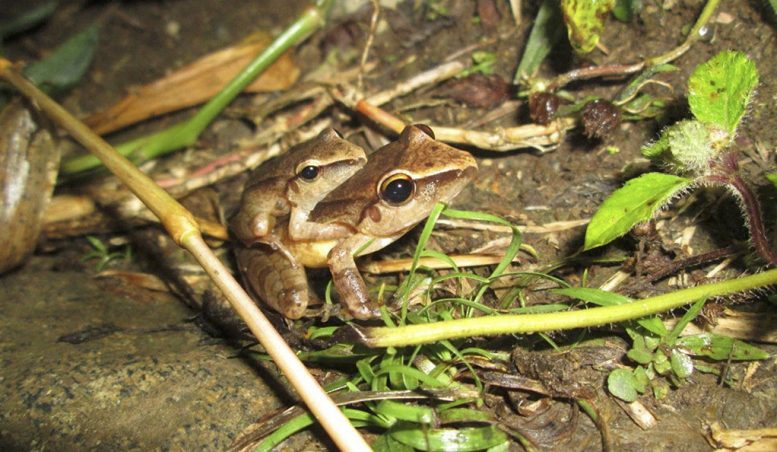
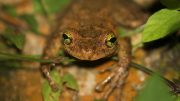
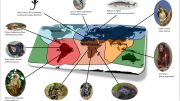

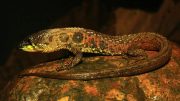

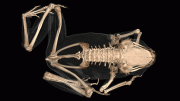
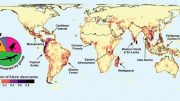
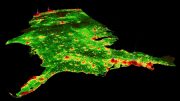
Acid rain from industrial pollution knows no boundaries. Amphibians are to us are like the canary was to the coal miner.